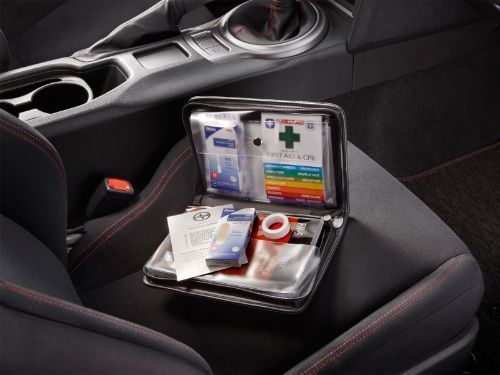
A well-stocked first aid kit is an essential item to have in your home, car, office, and for any outdoor activities in case of minor injuries and medical emergencies. Here are the basic components you should include when building your first aid kit.
Adhesive Bandages and Gauze
No First Aid Kit is complete without adhesive bandages to cover small cuts and scrapes. Be sure to include bandages in multiple sizes from small to large. Include sterile gauze pads that can be used to cover wounds and stop bleeding. Gauze rolls are also useful for wrapping and securing dressings. Include at least 6 each of the bandages, gauze pads, and gauze rolls to start.
Antiseptic and Antibiotic Ointment
An antibacterial ointment like Neosporin is essential for treating minor cuts, scratches, and burns to prevent infection. Look for an ointment that contains Neosporin or another broad-spectrum antibiotic. Be sure to also include hydrocortisone cream to reduce itching and inflammation of insect bites and minor skin irritations.
Pain and Fever Relievers
A supply of pain relievers is necessary to treat headaches, cramps, minor injuries, or reduce a low-grade fever. Include at least 10 tablets each of acetaminophen and ibuprofen. Be sure any children or teens using the kit have the proper dosage based on their age and weight. Capsules may be easier for small children that have trouble swallowing pills.
Antiseptic Wipes
Pack individually wrapped antiseptic wipes to quickly and easily clean wounds and hands both before and after treating injuries. Look for wipes containing ingredients like benzalkonium chloride that kill bacteria without stinging too much. At least 10-15 wipes should get you started.
Adhesive Tapes
Bring along rolled gauze or paper medical tape to secure dressings or splint minor injuries. Include zip ties or cord to create an improvised splint if needed. Be sure to have tape in varying widths from .5 inches to 2 inches wide.
First Aid Guide
No one can be expected to remember all first aid procedures, so an essential item for any kit is a small first aid manual or guide explaining how to treat common emergencies. Opt for a waterproof field guide that fits easily in the kit.
What Else to Include in Your First Aid Kit
Nitrile Gloves
Disposable nitrile gloves are a necessity to protect you from potential bloodborne pathogens when giving first aid or CPR. Be sure to include at least 6 pairs of gloves in assorted sizes.
Eye Pad and Eye Wash
Even minor irritants like dirt, shavings, or debris can cause eye injuries, so include an eye pad for shielding any eye wound along with a small bottle of sterile saline solution for flushing eyes if needed.
Scissors, Tweezers, and Thermometer
Consider adding a pair of trauma scissors or tweezers for removing splinters, ticks, or draining boils and wounds. An oral thermometer allows monitoring a sick person's temperature.
CPR Face Shield or Mask
A face shield is helpful for giving rescue breaths during CPR, protecting both victim and responder from contact with body fluids. Include at least 1 face shield for every 3-5 people your kit is intended to serve.
Survival Blanket
A compact Mylar survival blanket is great for preventing heat loss from victims of shock. It rolls up small but provides significant insulation.
Emergency Whistle
A loud emergency whistle can summon help if injured and no phone reception, signaling rescuers to your location during outdoor adventures.
Other Extras
Not every situation calls for the same items, so consider your needs and activities when customizing a kit. A few additional specialized items to potentially pack include sterile wound closure strips, a Sam Splint for immobilizing fractures, instant cold packs for injuries, snakebite kits if venturing into areas with venomous snakes, space blanket, extra prescription medications. Do not forget to periodically check expiration dates and restock supplies as items are used. A well-rounded first aid kit provides essentials for temporary care until medical help arrives.
What to Include in a First Aid Kit for Your Car
Given how common car accidents and mechanical issues are, having an effective first aid kit in your vehicle can offer potentially life-saving assistance until emergency responders arrive.
Adhesive Bandages and Assorted Dressings
Sterile gauze pads, rolls, and bandages in varying sizes should be the building blocks for treating cuts, abrasions and controlling bleeding from car accident injuries on the road.
Antibiotic Ointment and Cream
Like home first aid kits, a small tube each of Neosporin and hydrocortisone cream can treat wounds and reduce pain/irritation from road rash.
Pain Relievers
Keep pain relievers like acetaminophen, ibuprofen, and anti-nausea medication accessible to counter headache, muscle aches, or motion sickness after a crash.
Cold Packs
Instant-cold compresses activate to reduce pain and swelling from musculoskeletal injuries or sprains commonly caused in motor vehicle collisions.
Medical Tape
Roll medical tape is necessary for securing dressings to wounds in bumpy vehicle conditions on the way to emergency care.
Trauma Shears
Heavy-duty trauma shears can cut seatbelts or clothing off victims needing immediate medical access more effectively than regular scissors.
Gloves
Disposable nitrile gloves protect against contact with blood and body fluid while treating crash or breakdown victims on the roadside.
First Aid Manual
Ensure your car kit contains a waterproof mini first aid guide for administration of aid without cell reception.
Emergency Blanket/Whistle
Like hiking first aid kits, include an emergency space blanket for retaining body heat from shock casualties, along with a loud emergency distress whistle.
Get This Report In Japanese
Get This Report In Korean
About Author:
Priya Pandey is a dynamic and passionate editor with over three years of expertise in content editing and proofreading. Holding a bachelor's degree in biotechnology, Priya has a knack for making the content engaging. Her diverse portfolio includes editing documents across different industries, including food and beverages, information and technology, healthcare, chemical and materials, etc. Priya's meticulous attention to detail and commitment to excellence make her an invaluable asset in the world of content creation and refinement.
(LinkedIn- https://www.linkedin.com/in/priya-pandey-8417a8173/)


































